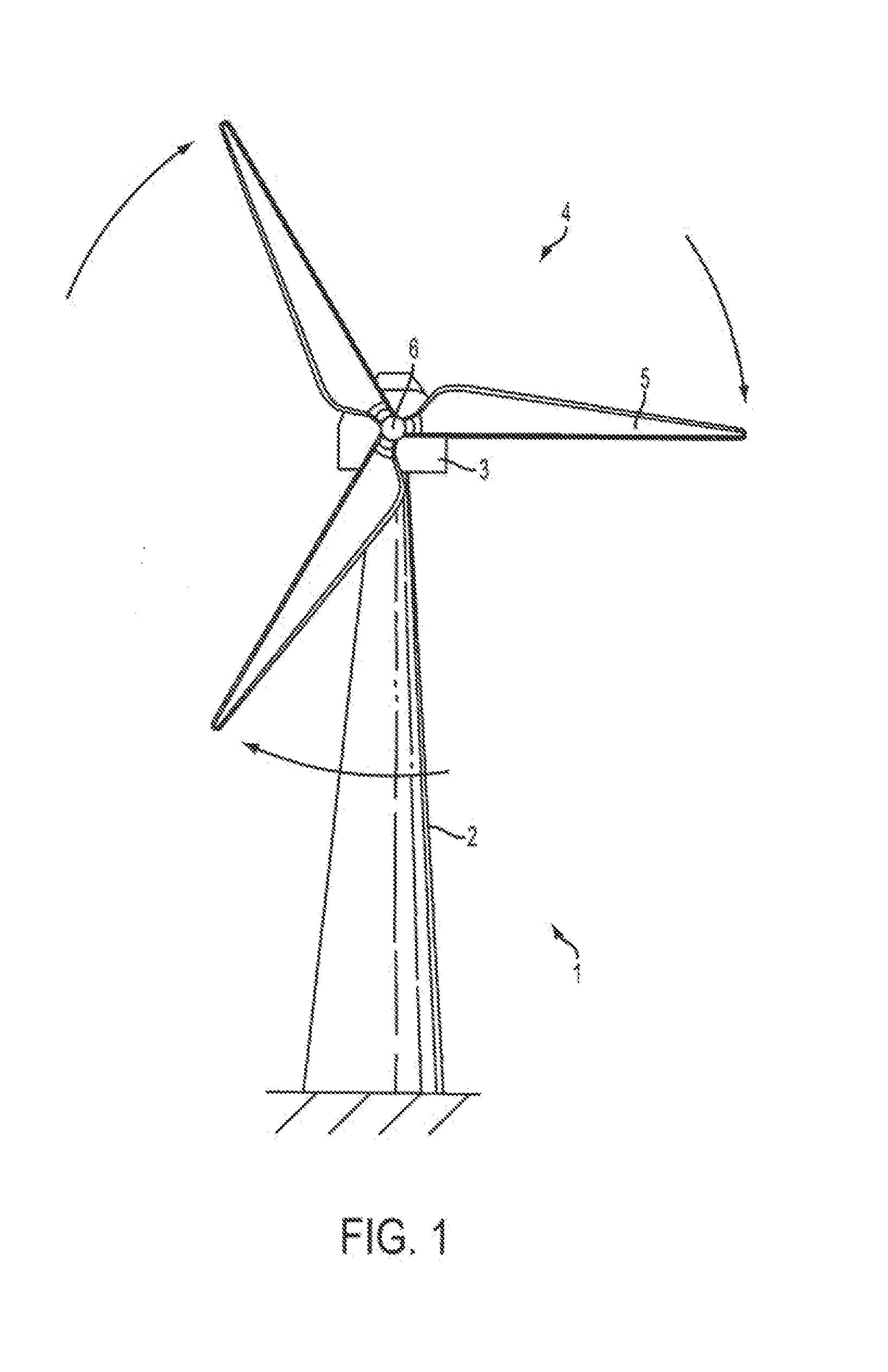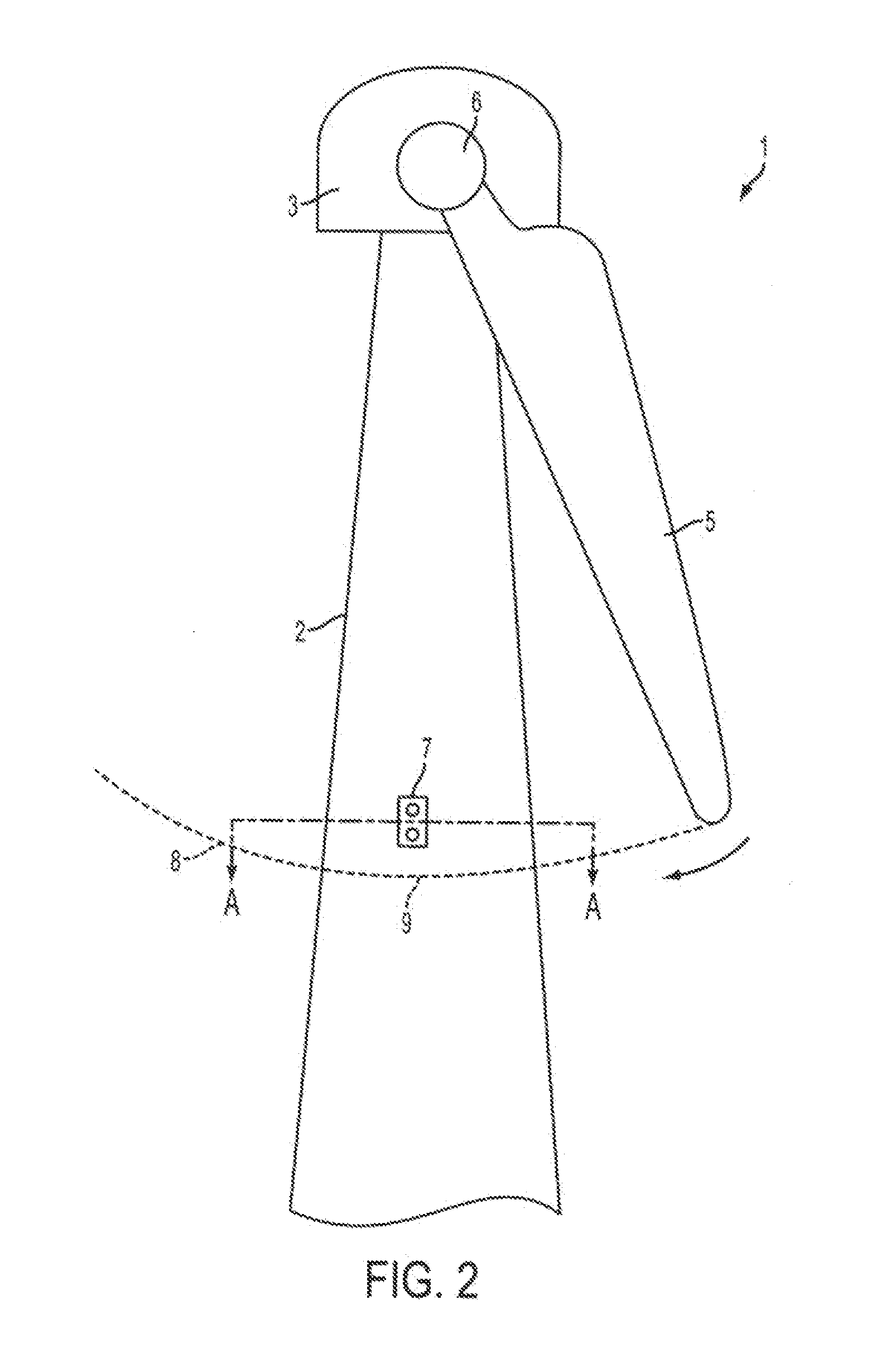Wind turbine blade vibration detection and radar calibration
a technology of radar calibration and vibration detection, which is applied in the field of radar calibration of wind turbine blades, can solve problems such as difficult maintenance of arrangemen
- Summary
- Abstract
- Description
- Claims
- Application Information
AI Technical Summary
Benefits of technology
Problems solved by technology
Method used
Image
Examples
Embodiment Construction
[0052]Embodiments according to a first aspect of the present invention will now be described.
[0053]FIG. 2 shows a schematic illustration of a wind turbine incorporating a radar unit 7. The wind turbine is shown as having only a single blade for illustration purposes only. It will be appreciated that a wind turbine will usually have more blades, and typically will have three blades. As wind is incident on the blade it causes a rotation in the direction indicated by the arrow in the figure. The blade traces out a circular path 8 and reaches its lowest point 9 relative to the base of the turbine when the major or lengthwise axis of the blade is vertical; that is, the blade reaches its lowest point in its rotation when its major axis coincides with the main / vertical axis of the tower 2.
[0054]Fixed to the tower is a radar unit comprising an emitter and receiver. The radar unit is positioned above the lowest point 9 at which the blade passes such that radar signals emitted from the radar ...
PUM
 Login to View More
Login to View More Abstract
Description
Claims
Application Information
 Login to View More
Login to View More - R&D
- Intellectual Property
- Life Sciences
- Materials
- Tech Scout
- Unparalleled Data Quality
- Higher Quality Content
- 60% Fewer Hallucinations
Browse by: Latest US Patents, China's latest patents, Technical Efficacy Thesaurus, Application Domain, Technology Topic, Popular Technical Reports.
© 2025 PatSnap. All rights reserved.Legal|Privacy policy|Modern Slavery Act Transparency Statement|Sitemap|About US| Contact US: help@patsnap.com



